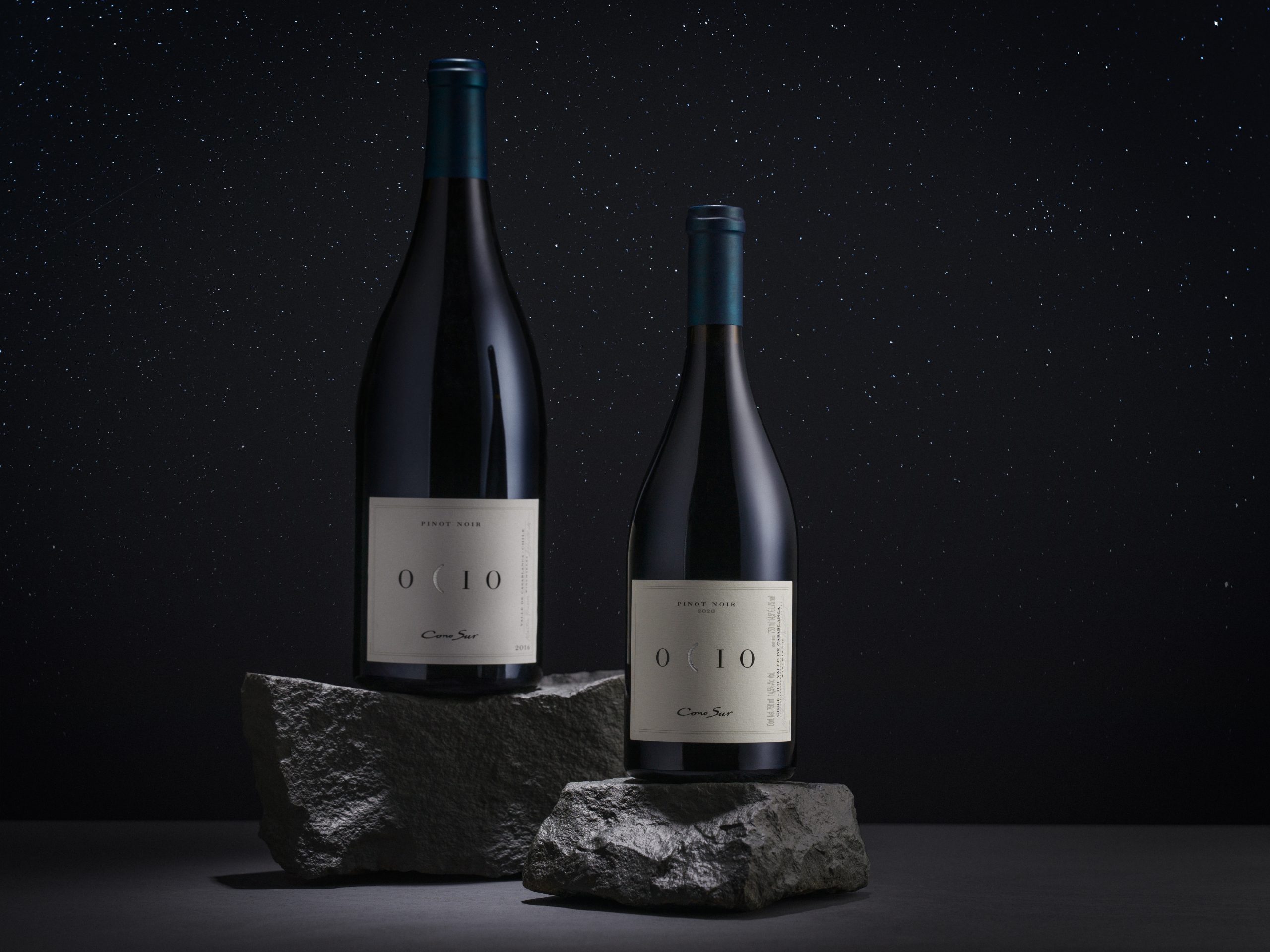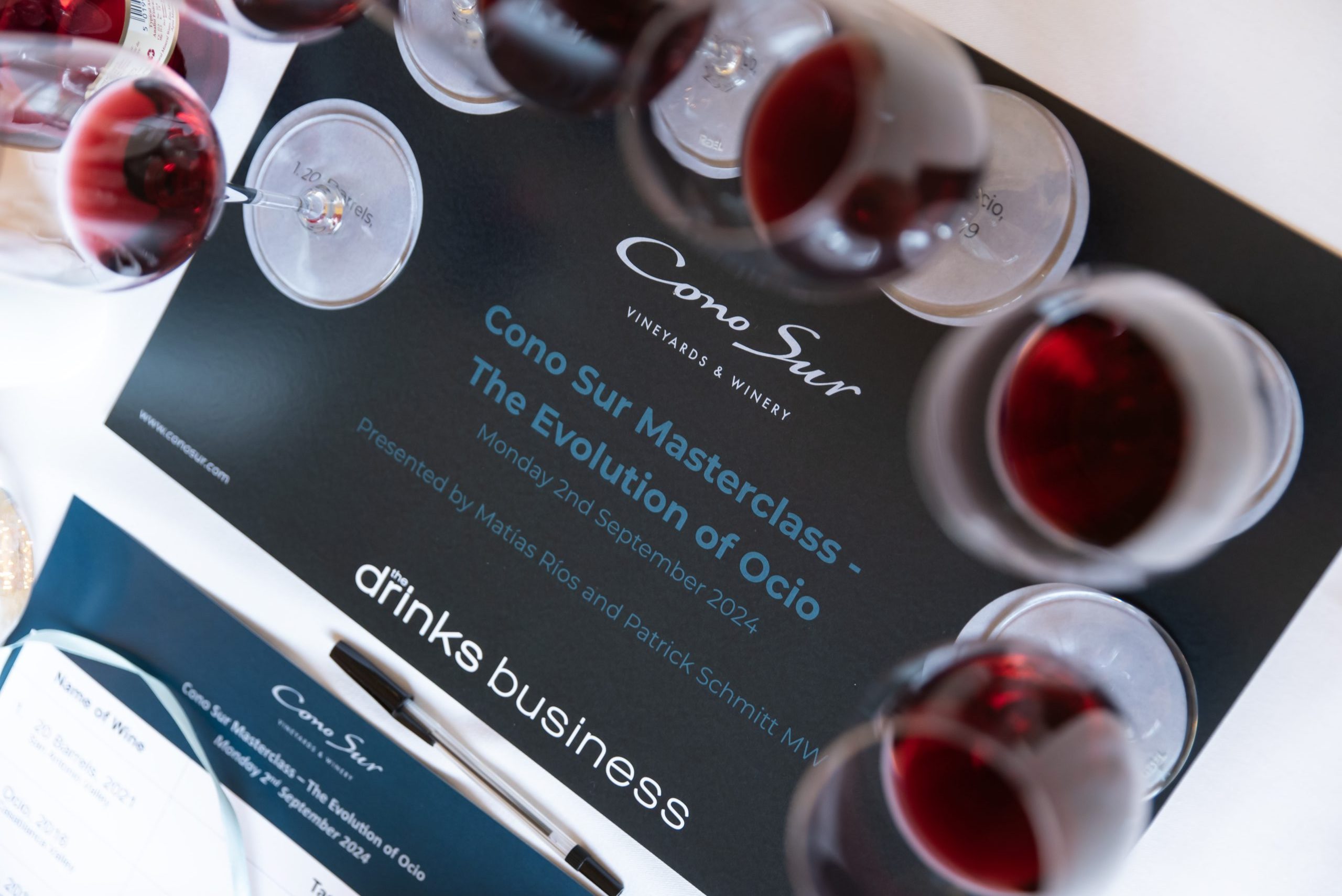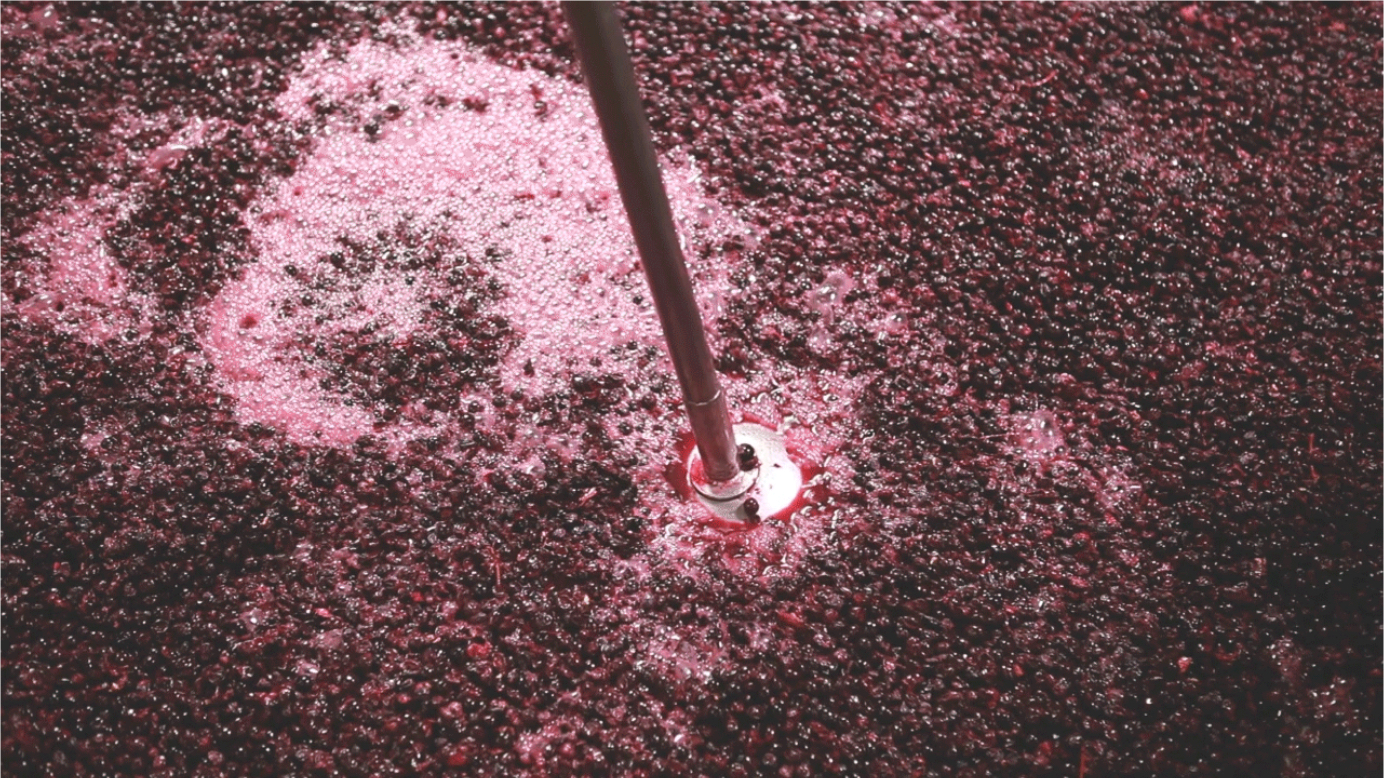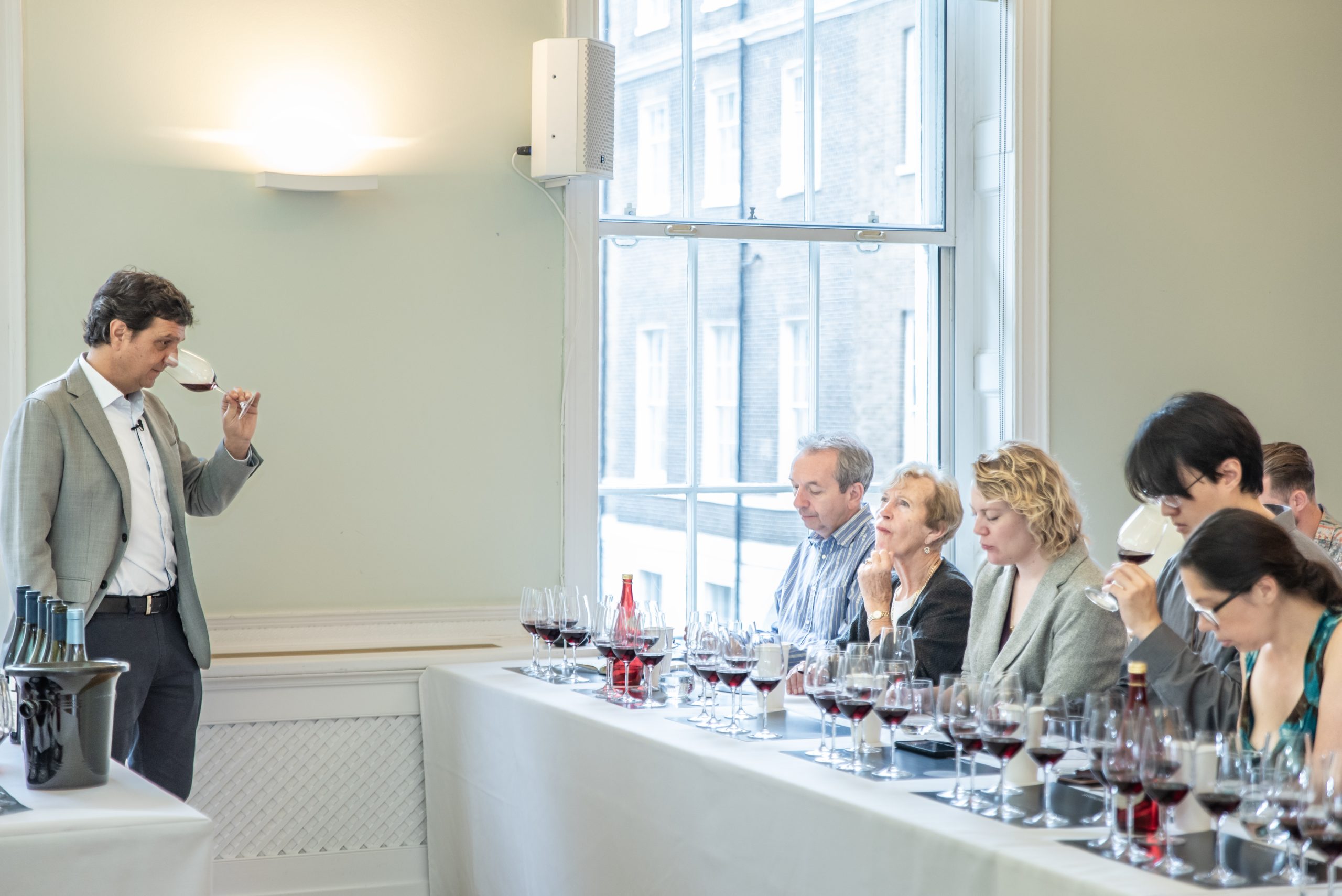Pinot Noir finds Chilean identity in Cono Sur Ocio
At a recent masterclass, db discovered how Cono Sur combines Chilean terroir with international know-how in its top Pinot Noir, Ocio.

When Patrick Schmitt MW, opening proceedings, branded the audience “wine obsessives”, no-one in the room argued. At a Pinot Noir masterclass, that is par for the course. Yet Matías Ríos, head winemaker at Cono Sur, introduced Ocio showing a focus and drive that stood out even in that assembled company. He spoke as if on a mission to make the case that Chile is a haven for makers and lovers of fine wine. Before even considering Ocio, he proposed that Chile’s diversity is unique, and often underappreciated.
The pitch began with geography. Chile is famously long, spanning 4,300 kilometres from north to south. As a relatively narrow strip, it covers a staggering variety of latitudes and climates in a relatively low surface area. As Ríos proposed, you only need to look to the cardinal points to see an immense variety of landscapes. To the north, the Atacama Desert is the world’s driest non-polar landscape. Chile’s southernmost tip is closer to Antarctica than any other mainland. In the east, the Andes rise to nearly 7,000 metres. The cool Pacific Ocean, to the west, stretches for thousands of kilometres until the next major landmass.
For winemakers, the possibilities are substantial. The vineyards of Bío-Bío, for instance, will often be within sight of glaciers. In Colchagua, on the other hand, temperatures might hit 28°C in the hottest months. There is real variety with which to make a wide selection of wines.
Yet, on the international stage, Chile is often reduced to its signature varieties. Long-established Cabernet Sauvignon and rediscovered Carmenere rule the roost. For Ríos, part of the challenge in Chile is bringing its diversity to the consumer. “Chile is much more than its classic varieties,” he explained. He advocates for less-recognised varieties such as Gewürztraminer, Viognier and, as a particular passion project at Cono Sur, Pinot Noir.
It is, to an extent, personal. Cono Sur’s Santa Elisa Estate is on the site of the first documented Pinot Noir vines in Chile, planted in 1968. It is also a pragmatic choice of grape, with the dual cooling influences of the Andes and the Pacific ensuring that Pinot Noir can easily retain its characteristic acidity in Chile.
Moreover, Pinot Noir offers the versatility to express Chile’s diversity. “We want one Pinot for each moment,” said Ríos. The range therefore includes a wide selection of Pinot Noirs. Among them are the everyday-drinking Bicicleta and the 20 Barrels Pinot Noir, a wine which Schmitt branded “one of the best-value Pinot Noirs in the world”.
At the top of the Pinot pantheon sits Ocio, Cono Sur’s icon wine. Intended as a no-holds-barred expression of the grape’s potential in Chile, it acts as the emblem of Ríos’ overall aims. “Our goal is not to make the best copy of Burgundy in Chile. Our goal is to develop the Chilean style of Pinot Noir,” he said.

Crafting an icon wine
To create such a wine, immense care has been taken in its production. It is the culmination of a 25-year project to create the best possible expression of Pinot Noir in Chile. Perhaps as a statement of intent, for more than 20 years Cono Sur has worked with Burgundian consultant Martin Prieur. Although choosing not to ape Burgundy, the producer has nonetheless learned from the famed region in crafting fine wine.
The care begins with the selection of sites. Unlike many fine wines, Ocio has not been wedded to a single location. Although a coastal influence is a recurring theme, the question is: which sites will best achieve a specific style, rather than which have the pull of tradition? The first sites for Ocio were in the Casablanca Valley, cooled by the Humboldt Current to retain elegant acidity. Since 2019, however, sites in San Antonio, which have an even greater maritime influence, increasingly feature. Indeed, in 2021, San Antonio took centre-stage, constituting 85% of the blend.
In the winery, care and delicacy are the central concerns. Having been rigorously selected through hand-harvesting, the grapes are treated gently to extract aromatic compounds and tannins without risking harshness. A cold maceration is key to the process, allowing a full extraction of colour and tannins without sacrificing the most delicate aromas of Pinot Noir.
Partner Content
During fermentation, the grapes are crushed by foot and the cap is punched down manually. That is not a concession to tradition: “Human energy is softer than any machine,” according to Ríos. No mechanical process should be risked that might compromise the wine’s elegant character.

Once the wine is made, it is aged in French oak, 70% of which is new. Alongside characteristic freshness from coastal and Andean influences, Ríos sees spiciness as a key element of Chilean Pinot Noir. The touch of new oak during its 14 months in barrel accentuates those aromas. The oak also softens the wine, which is essential, given Ríos’ plans for it. Although the wine is intended for ageing, he has no desire to craft a cuvée that is unapproachable for its first 20 years. Ocio is intended to be enjoyable both on release and with bottle age.
Exploring the vintages
Of course, with the event themed around a vertical tasting, the wines’ ageing potential came up for discussion extensively as bottles were opened. Schmitt even opened the session with a reminder of the importance of age. “We’re discussing something that’s crucial to the notion of fine wine,” he noted. “Does it improve with age?”
The run of five vintages between 2016 and 2021 (omitting 2018), showed how the wine might change from year to year. For instance, 2016 had a particularly cool growing season, whereas 2017 was noticeably warmer. The variations, however, proved subtle, with Ríos praising “the big buffer of the ocean” for ensuring that the vintages never became too hot for the style. He also explained how the consistent style is led by flavour profile, rather than by data. “I never look at the pH numbers when I select the berries,” he said. “I just taste the berries.”

In explaining the selection of vintages, Ríos highlighted how they show the development of Ocio as a flagship wine. He also reflected on his personal love of the wines as they show a little more development. The 2016, he declared, was showing its gentleness, elegance and freshness, but still had the potential to develop. “For more softness and vanilla on the palate, you could keep it two or three years more,” he mused.
As for the most recent vintage, he delivered on his promise that the wine would be special on release. Indeed, there is a case for it to be described as world-beating. The 2021 vintage on show had, after all, secured the top Master medal at The Global Pinot Noir Masters 2024. For a wine to shine both in a vertical tasting and in a blind competition is an impressive double achievement. Certainly, it will prove a fine foundation if Ocio is to be the ambassador for Chilean Pinot Noir.
This tasting note from the Global Pinot Noir Masters 2024 was supplied by Patricia Stefanowicz MW.
Chilean Pinot Noir began in the 1960s, with vines planted in the Colchagua Valley, then considered the coolest and best region for this finicky grape variety. Today, Cono Sur has found that Casablanca and, increasingly, San Antonio, provide better terroirs, with red clay, sand and granitic soils, and very cool meso-climates, which enable winemaking director Matías Ríos and his team to fashion beautiful Pinot Noirs. This flagship Ocio, from the very cool San Antonio Valley, close to the deep, cold waters of the Pacific Ocean, is exquisite. Pale cherry-hued, the aromatics show red berries, blueberry and cedarwood with a mint note giving lift. Dry, the vibrant fruit is balanced by brisk acidity and linen-textured tannins, with toasty, spicy oak adding complexity. Medium-bodied, this wine will pair well with game, especially roast venison ‘backstrap’.
Related news
The timeless charm behind Rioja’s Monte Real
IGP Méditerranée: the one-stop shop for festive wine
Pata Negra Fauna range reveals the characters of Spanish terroirs




